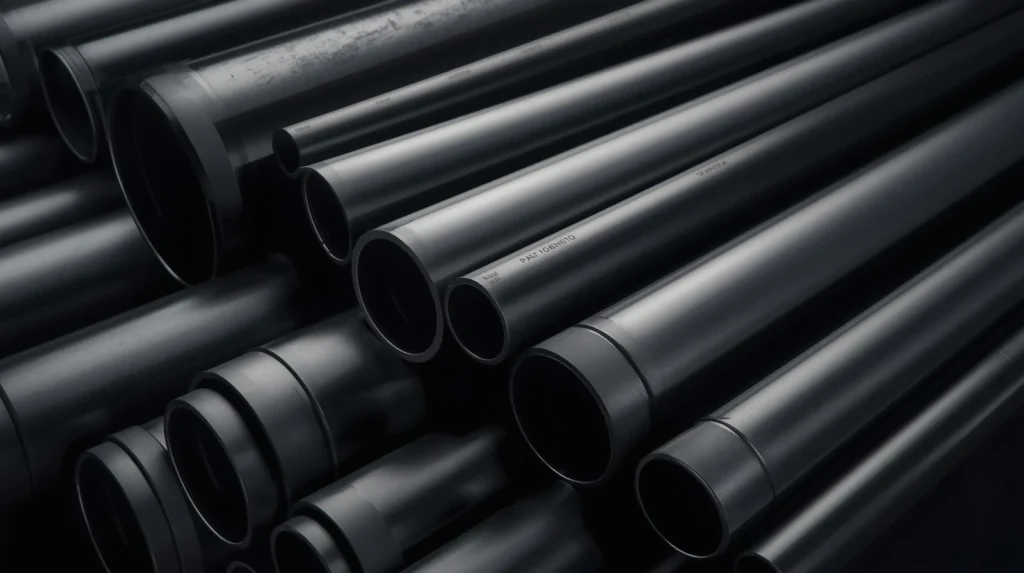What if the pipes under your feet could do more than just transport water? What if they could help reduce waste, improve energy efficiency, or even enhance data security? The world of High-Density Polyethylene (HDPE) pipes is evolving in ways that go far beyond traditional water and gas transportation. In fact, in 2025, HDPE pipes are being utilized for some truly groundbreaking applications.
You might be familiar with HDPE pipes in construction, utilities, or even agriculture, but the innovation in this field has moved forward at an exponential rate. From sustainable infrastructure solutions to advanced technology integrations, HDPE pipes are now solving complex problems in industries you might not expect. In this article, we’ll uncover some of the most exciting and innovative uses for HDPE pipes in 2025.
What Makes HDPE Pipes So Special?
Before we dive into the new applications of HDPE pipes, it’s important to understand why they’ve become such a versatile material. High-Density Polyethylene (HDPE) is a thermoplastic polymer known for its robustness, chemical resistance, flexibility, and relatively low cost. These properties have made HDPE pipes the go-to choice for many industries, including construction, agriculture, and waste management.
However, what sets HDPE apart in 2025 is its evolving potential to serve in unexpected ways. With increasing environmental concerns and rapid technological advances, HDPE pipes are finding new life in diverse sectors, often playing a key role in solving sustainability challenges and driving innovation.
1. How Are HDPE Pipes Being Used for Smart Cities?
In the race to build smarter, more sustainable cities, HDPE pipes are taking center stage. They’re no longer just conduits for water and waste but integral components of the smart infrastructure. The key to their new role lies in the integration of sensor technology.
Case Study: Smart Water Management in Amsterdam
In cities like Amsterdam, HDPE pipes are equipped with sensors that monitor water usage and detect leaks in real time. This allows municipal authorities to adjust water distribution dynamically, reducing waste and improving efficiency. As cities strive to become more connected, HDPE pipes offer a low-cost, durable, and adaptable solution that can support IoT (Internet of Things) technology.
2. Can HDPE Pipes Improve Wastewater Treatment Processes?
HDPE pipes are playing a pivotal role in enhancing wastewater treatment systems, ensuring cleaner water returns to natural systems. Traditional concrete or PVC pipes used in wastewater systems are susceptible to corrosion and leakage over time. In contrast, HDPE pipes are resistant to these issues, providing a long-lasting and efficient solution.
Expert Insight: Use of HDPE Pipes in China’s Eco-Cities
In China’s eco-cities, such as Shenzhen, HDPE pipes are used in integrated water management systems that treat and recycle wastewater efficiently. The pipes’ resistance to harsh chemicals ensures that they can endure in demanding environments, making them ideal for wastewater treatment facilities.
3. How Are HDPE Pipes Revolutionizing Renewable Energy Systems?
In the push for cleaner, greener energy solutions, HDPE pipes are emerging as an unlikely ally in the renewable energy sector. Specifically, they’re making waves in geothermal energy systems.
Real-World Example: Geothermal Energy Systems in Iceland
In Iceland, geothermal energy systems rely heavily on HDPE pipes for heat distribution. The pipes are used to transfer hot water from geothermal sources to homes and businesses, providing a clean and cost-effective heating solution. HDPE’s ability to withstand high temperatures makes it an ideal material for this purpose.
4. What Role Do HDPE Pipes Play in Sustainable Agriculture?
Sustainability in agriculture is more important than ever, and HDPE pipes are making a significant impact. The pipes are used for irrigation systems, reducing water waste and increasing crop yields.
Case Study: Precision Irrigation in the United States
In California, where water scarcity is a critical issue, HDPE pipes are being used in precision irrigation systems that deliver water directly to plant roots. This not only reduces water consumption but also ensures that water is used where it’s needed most. By using HDPE pipes, farmers can optimize their irrigation systems, ensuring more sustainable agricultural practices.
5. Are HDPE Pipes Being Used for Data Protection?
In an age where cybersecurity is paramount, HDPE pipes are being used for more than just transporting fluids—they’re protecting valuable data.
Innovation in Data Centers
In 2025, one of the innovative uses of HDPE pipes is in data centers, where they are used to house and protect fiber optic cables. The pipes offer a secure, durable, and easily replaceable housing option that keeps data transmission lines safe from environmental factors.
6. How Are HDPE Pipes Transforming the Construction Industry?
The construction industry is experiencing a major shift toward more sustainable practices, and HDPE pipes are at the forefront of this transformation. These pipes are being used in new ways to optimize construction workflows and reduce environmental impact.
Example: Efficient Plumbing Systems in Green Buildings
In the booming green building movement, HDPE pipes are being used for plumbing systems in sustainable, energy-efficient buildings. Their lightweight nature and ability to resist corrosion make them ideal for reducing construction time and costs, while their recyclability aligns with eco-friendly building standards.
7. Can HDPE Pipes Help with Flood Control and Stormwater Management?
Flooding is a growing concern in many parts of the world, and HDPE pipes are being used to build effective stormwater management systems that prevent waterlogging and reduce flood risks.
Case Study: Flood Prevention in Miami
In flood-prone cities like Miami, HDPE pipes are being integrated into stormwater drainage systems. Their ability to handle high-pressure water flow, combined with their resistance to corrosion, makes them perfect for creating flood barriers and efficient drainage channels that mitigate the impact of heavy rains.
Conclusion
The applications of HDPE pipes have expanded dramatically in 2025, from smart cities to renewable energy and agriculture. As technology evolves and the demand for sustainable practices increases, HDPE pipes are proving to be an essential tool across a wide range of industries. Whether you’re a business owner, engineer, or city planner, adopting HDPE pipes for your projects could lead to cost savings, increased efficiency, and a more sustainable future.
As you consider HDPE pipes for your next project, keep these innovative applications in mind. Embrace the versatility of this material and explore how it can be integrated into your infrastructure, reducing costs and maximizing long-term benefits.
FAQ
1. What are the advantages of using HDPE pipes in smart cities?
HDPE pipes, when equipped with sensors, help monitor and manage water distribution, detect leaks, and reduce waste in real-time, making cities more efficient and sustainable.
2. How do HDPE pipes contribute to wastewater treatment?
HDPE pipes offer resistance to corrosion and leakage, making them ideal for long-lasting and efficient wastewater treatment systems, ultimately reducing maintenance and improving performance.
3. Can HDPE pipes be used in renewable energy projects?
Yes, HDPE pipes are increasingly used in geothermal energy systems for heat transfer due to their durability and resistance to high temperatures.
4. How do HDPE pipes improve agricultural sustainability?
HDPE pipes enable precision irrigation systems, ensuring efficient water usage and reducing waste, leading to improved crop yields and more sustainable farming practices.
5. Are HDPE pipes suitable for protecting data cables?
Yes, HDPE pipes are used in data centers to house fiber optic cables, providing protection from environmental damage and ensuring secure and efficient data transmission.
6. How are HDPE pipes being used in flood control systems?
HDPE pipes are incorporated into stormwater management systems to prevent flooding by efficiently channeling rainwater and ensuring proper drainage, especially in flood-prone areas.
7. Why should construction projects use HDPE pipes for plumbing?
HDPE pipes are lightweight, corrosion-resistant, and recyclable, making them an ideal choice for sustainable plumbing systems in green buildings. They also reduce construction time and costs.


